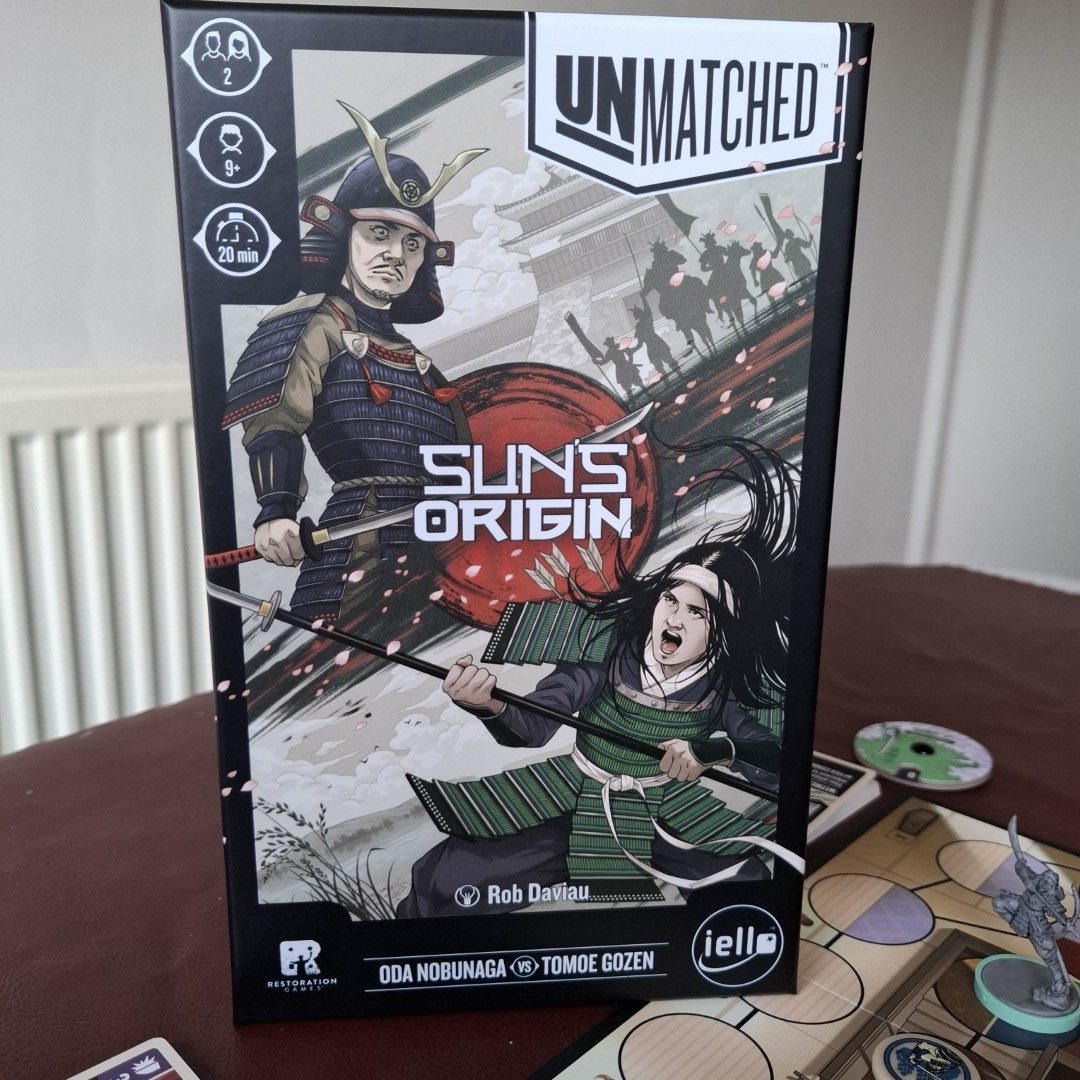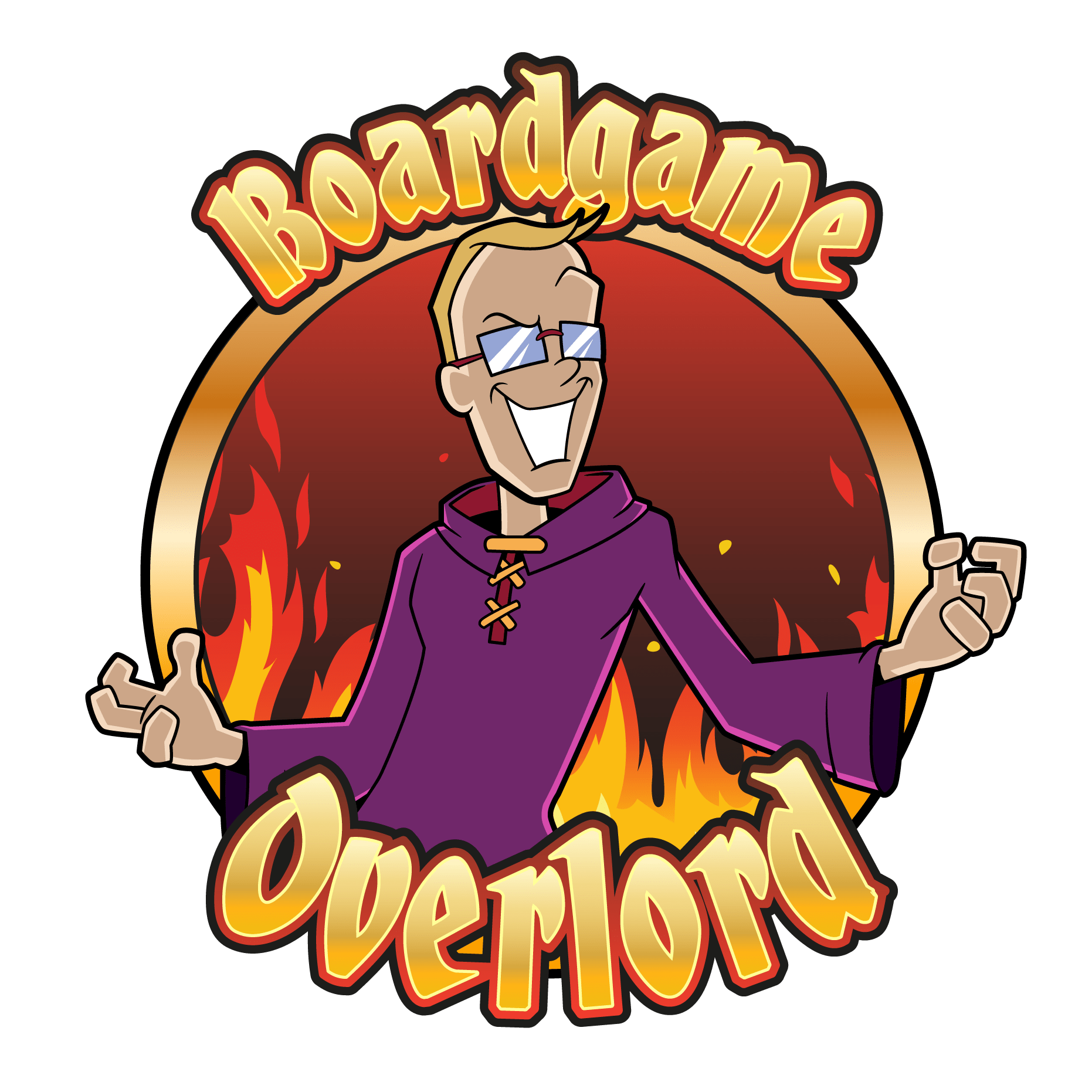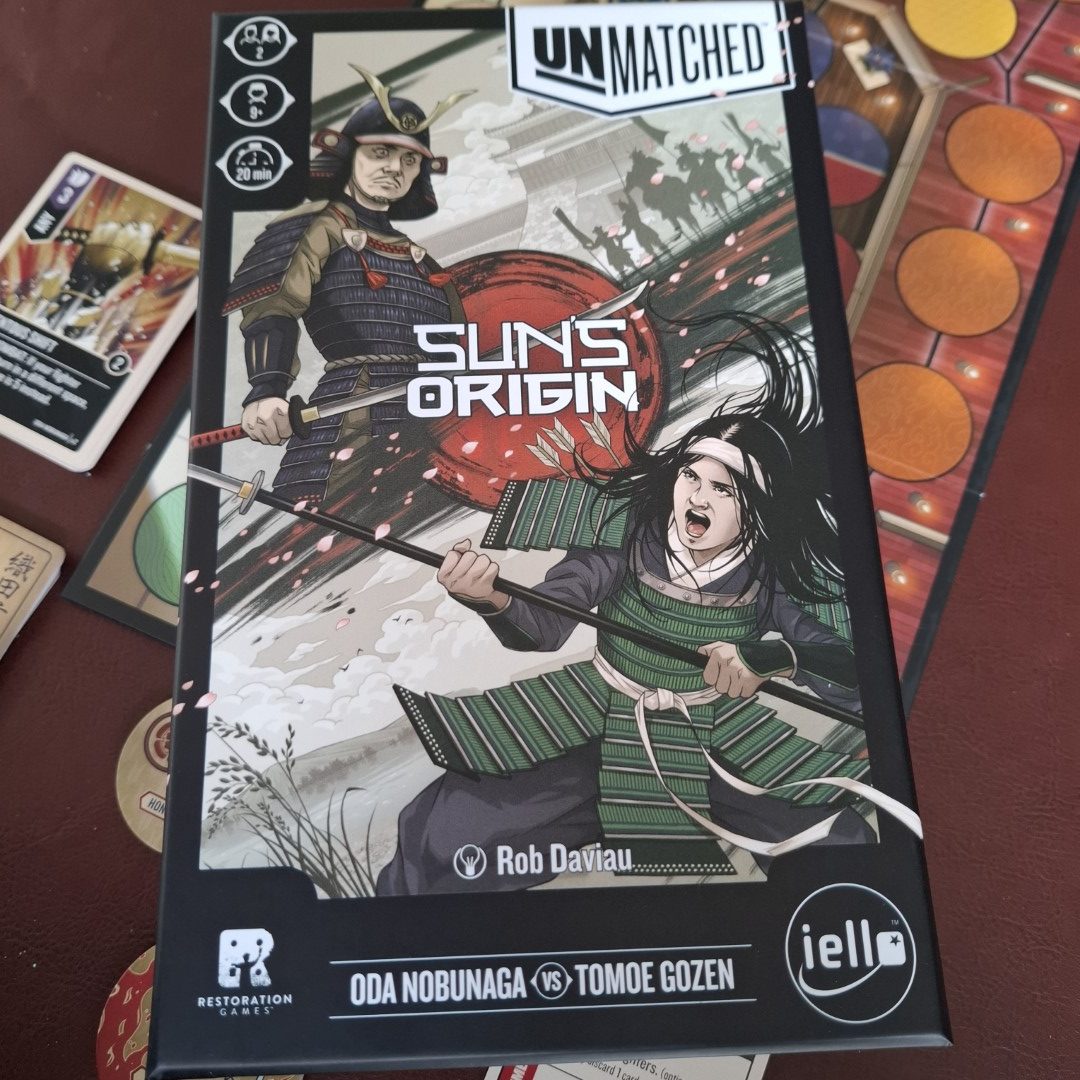Unmatched has been around for a while—six years, to be precise. The first set launched in 2019, and now, in 2025, many sets later, here I am—the Boardgameoverlord—just diving in for the first time. Well, almost. I did play one game with the Unmatched Teen Spirit set, though all I remember is that it had Squirrel Girl. I also recall signing up for an Unmatched tournament, realizing I needed to actually own some Unmatched, and quickly changing my plans.
So, is Unmatched Suns Origin my Unmatched starting point? Or is it also my ending?
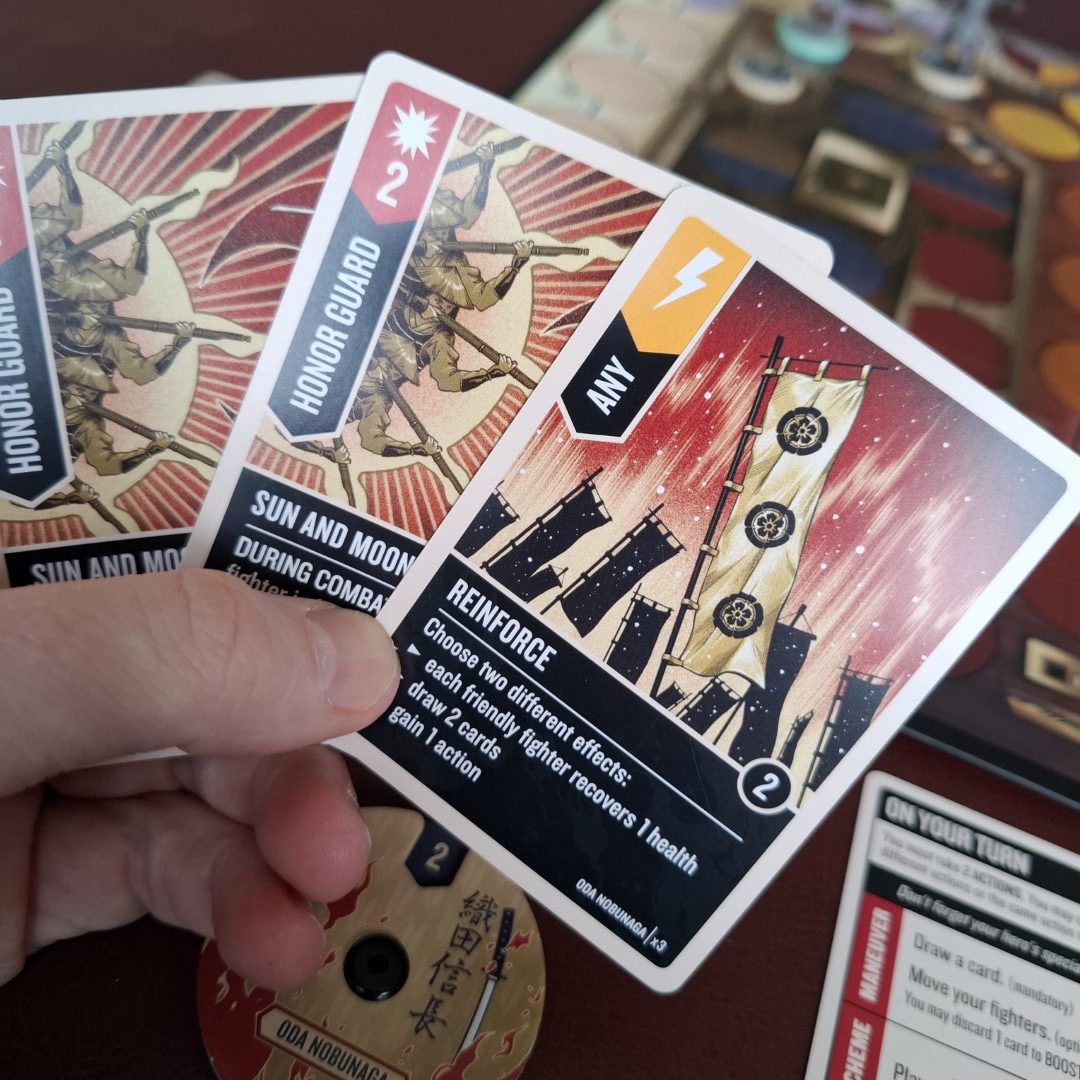
How to Play
Unmatched is a head-to-head battle until one player’s hero is defeated. It’s essentially a duel, with each hero bringing a different fighting style and playstyle to the table. As the box says, “In battle, there are no equals.”
The game unfolds over a series of turns, alternating between two players. On your turn, you take two actions—choosing from three possible options. You can perform two different actions or the same action twice.
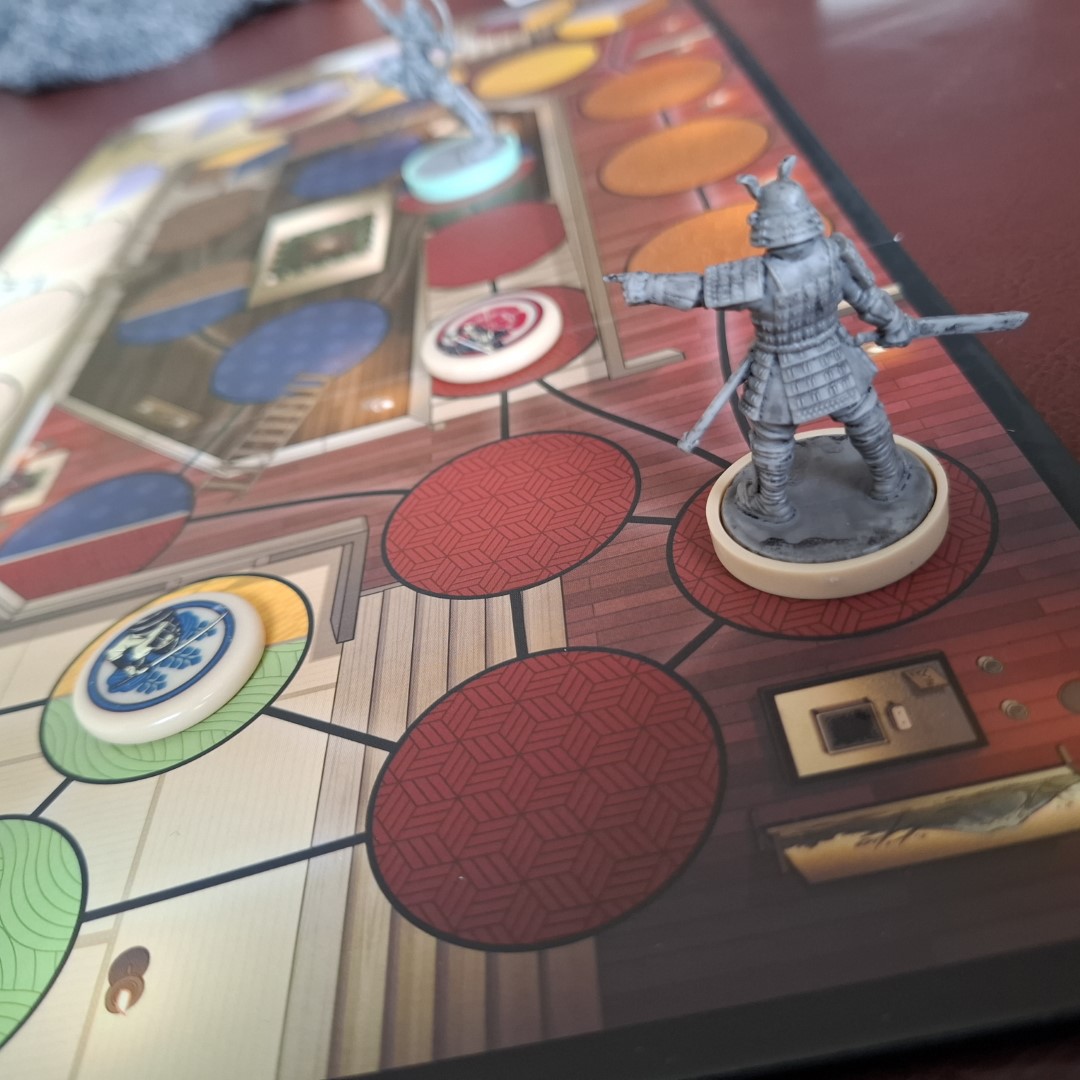
The Actions
Maneuver: Draw a card, then move your fighters. Fighters can move up to their move value, though you can boost this by discarding a card for its boost value. You can’t move through opposing fighters, but you can move through friendly ones.
Scheme: Play a scheme card (marked with a lightning bolt), resolve its effect, and discard it.
Attack: The most complex action. First, declare a target. Then, the attacker plays a face-down attack card. The defender may respond with a defense card. Versatile cards can be used for either. Both cards are then revealed, and combat is resolved—applying effects and calculating damage. The attacker deals damage equal to their attack card’s value minus the defender’s card value. Each damage reduces the defender’s health by one. If a health dial reaches zero, that hero is defeated.

The Rest?
While the Unmatched ruleset is simple, the depth comes from the unique decks. In Suns Origin, Oda Nobunaga and his honor guard face off against Tomoe Gozen. Oda is a melee character whose flanking abilities grant friendly fighters attack boosts and health recovery while disadvantaging flanked enemies. Tomoe, on the other hand, is a ranged fighter who thrives on movement, constantly dodging melee combat.
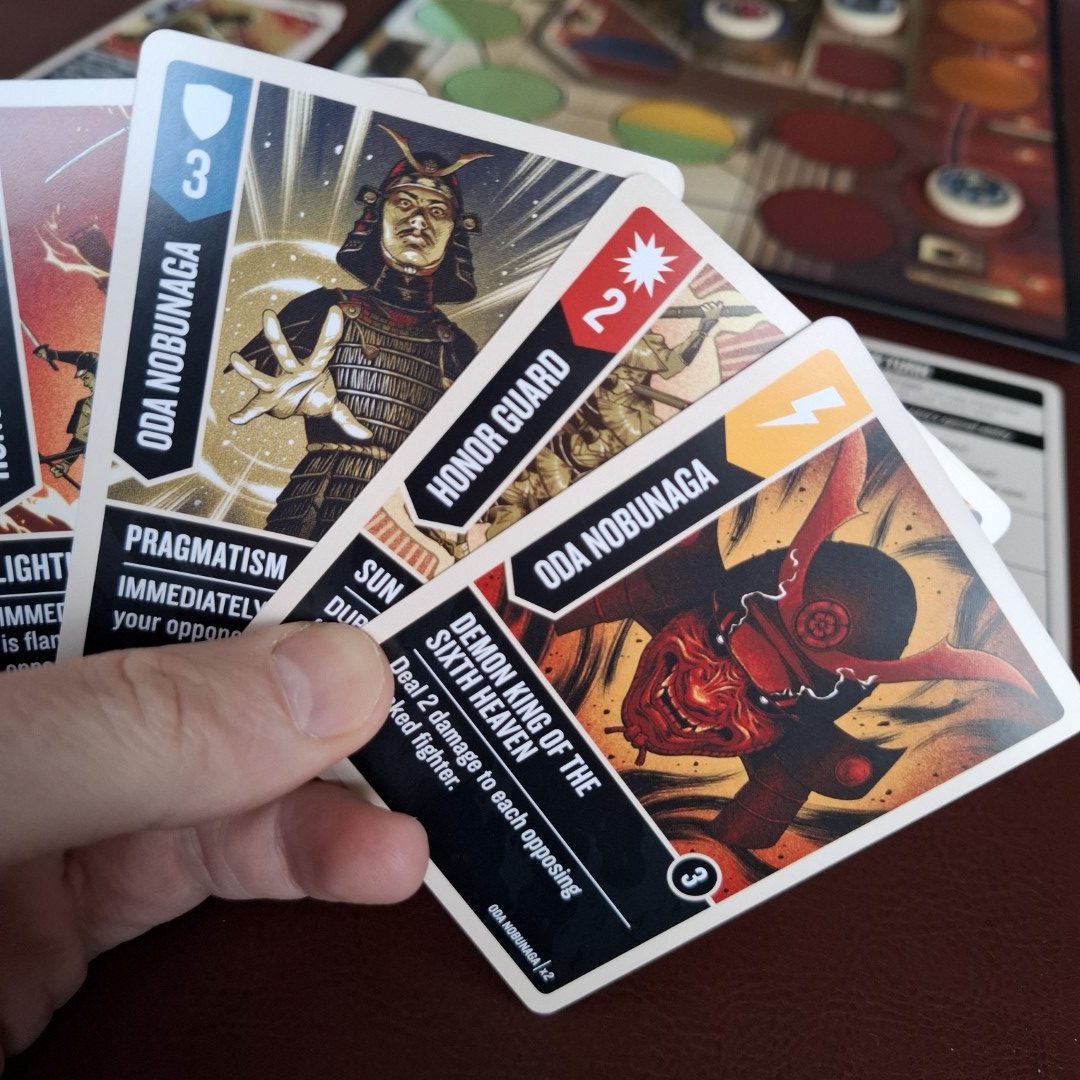
First Thoughts
As my introduction to Unmatched, Suns Origin immediately had me wanting to paint the miniatures. The decks looked exciting, and the historical background added a nice layer of context. Our first few games were all about learning—figuring out the decks and understanding each fighter’s style.
However, the learning process felt a bit overwhelming or maybe underwhelming is a better description. The rulebook doesn’t offer a summary of how to play each fighter. Yes, there’s a reference sheet for special rules, and the game explains melee vs. ranged attacks, but as someone new to Unmatched, I wished for a “How to play Tomoe” guide or an “Oda strategy” overview. In a head-to-head game, that kind of guidance would have been really helpful.
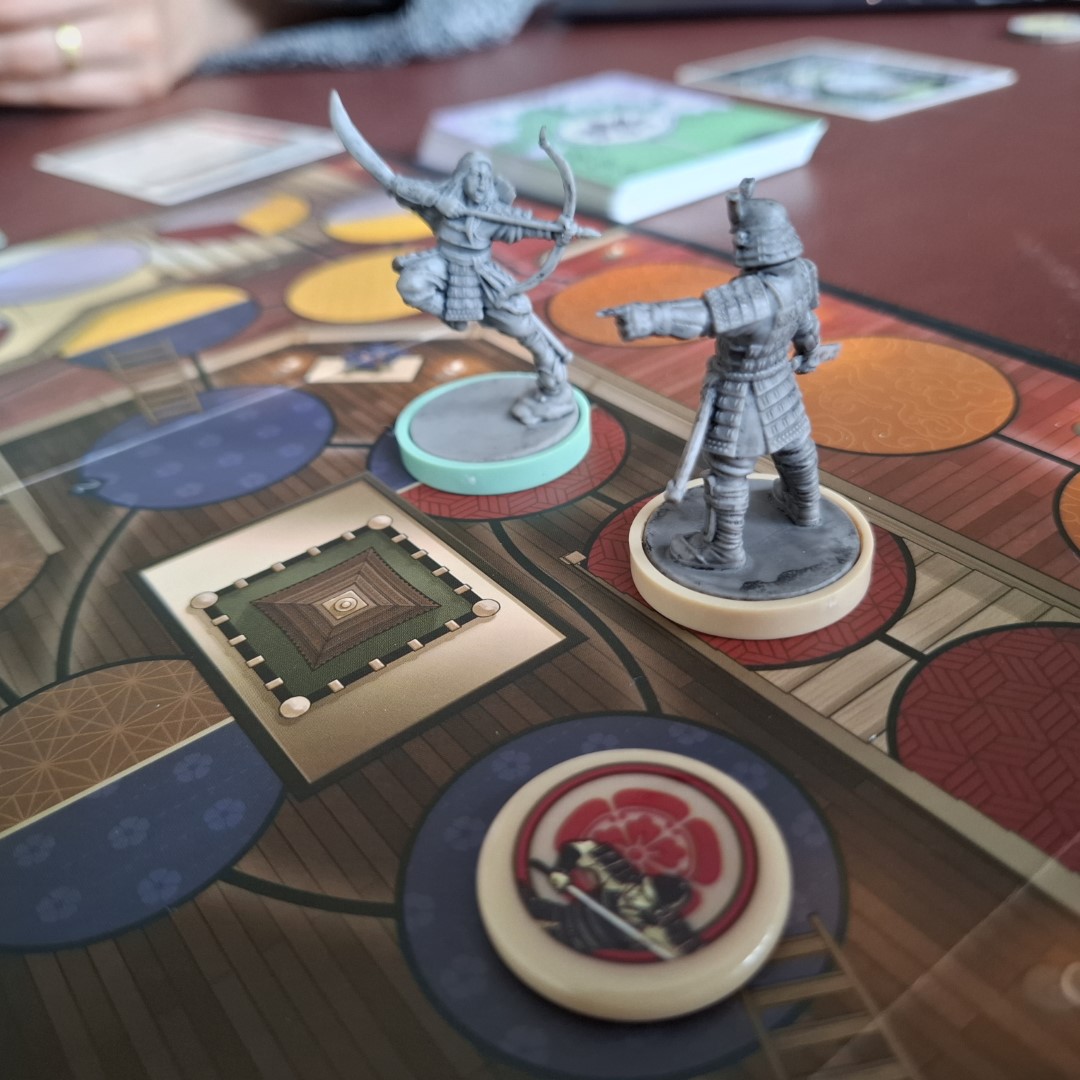
More Plays, More Depth?
After eight plays, can I give a conclusive review? Maybe not. I haven’t played as many games as those who started with Unmatched Volume 1. And perhaps I haven’t enjoyed Suns Origin as much as veteran players.
From game two, we both gravitated toward Tomoe—though neither of us admitted it at first. As we played more, it became clear: we preferred her. I’m not saying Oda is underpowered or unbalanced (though the game is called Unmatched, so who knows?), but we simply didn’t enjoy his playstyle as much.
The contrast between the two characters is obvious, and maybe that reflects our personal playstyle preferences. Oda is all about direct confrontation, flanking, and aggressive positioning. Tomoe, meanwhile, is constantly slipping away, making combat feel more dynamic. Perhaps that’s just our frustration talking, or maybe we haven’t figured out how to play Oda effectively.
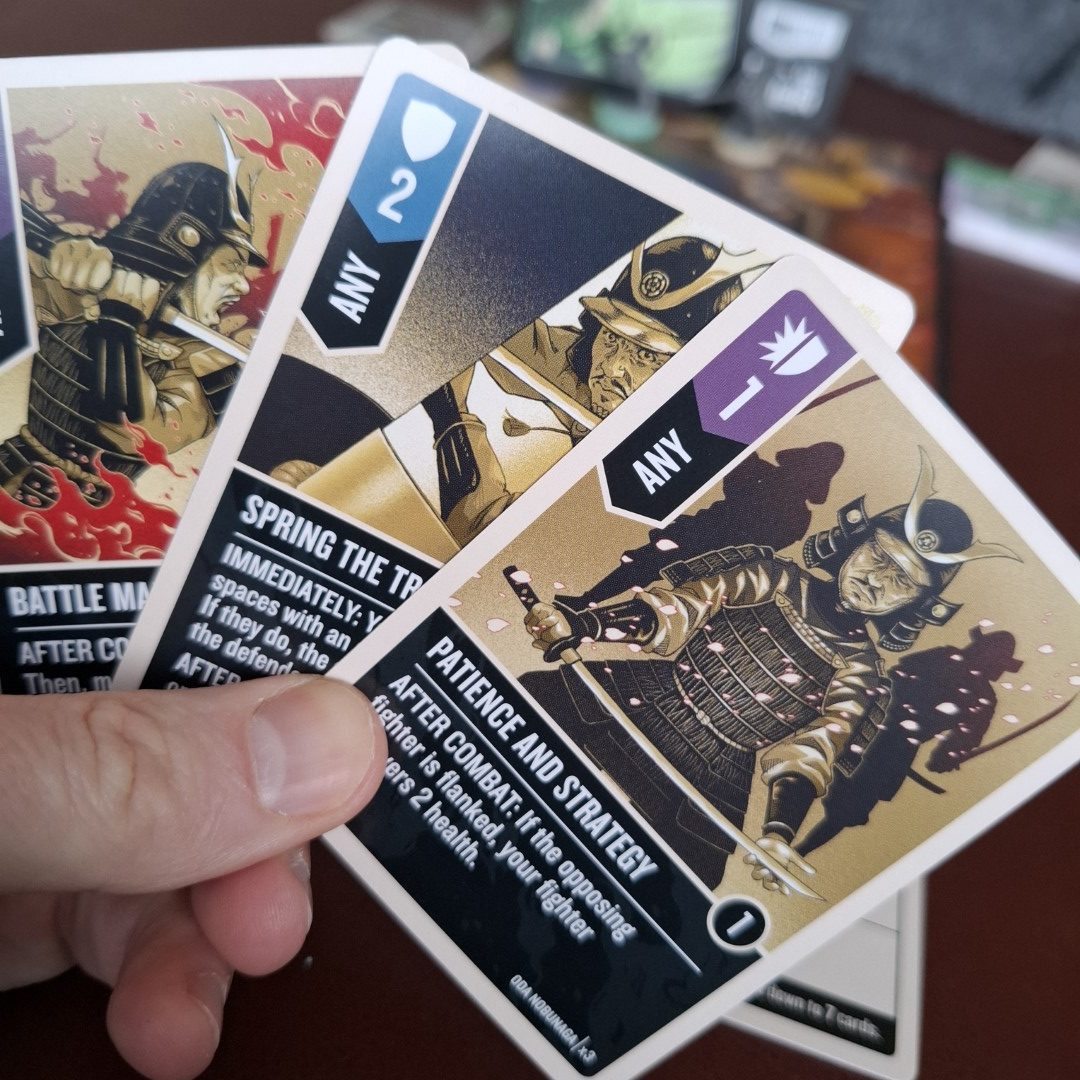
Final Verdict
As you know I rate games on the following scale:
Buy or Play
Wait for Sale or Play if You Like Game XYZ
Avoid
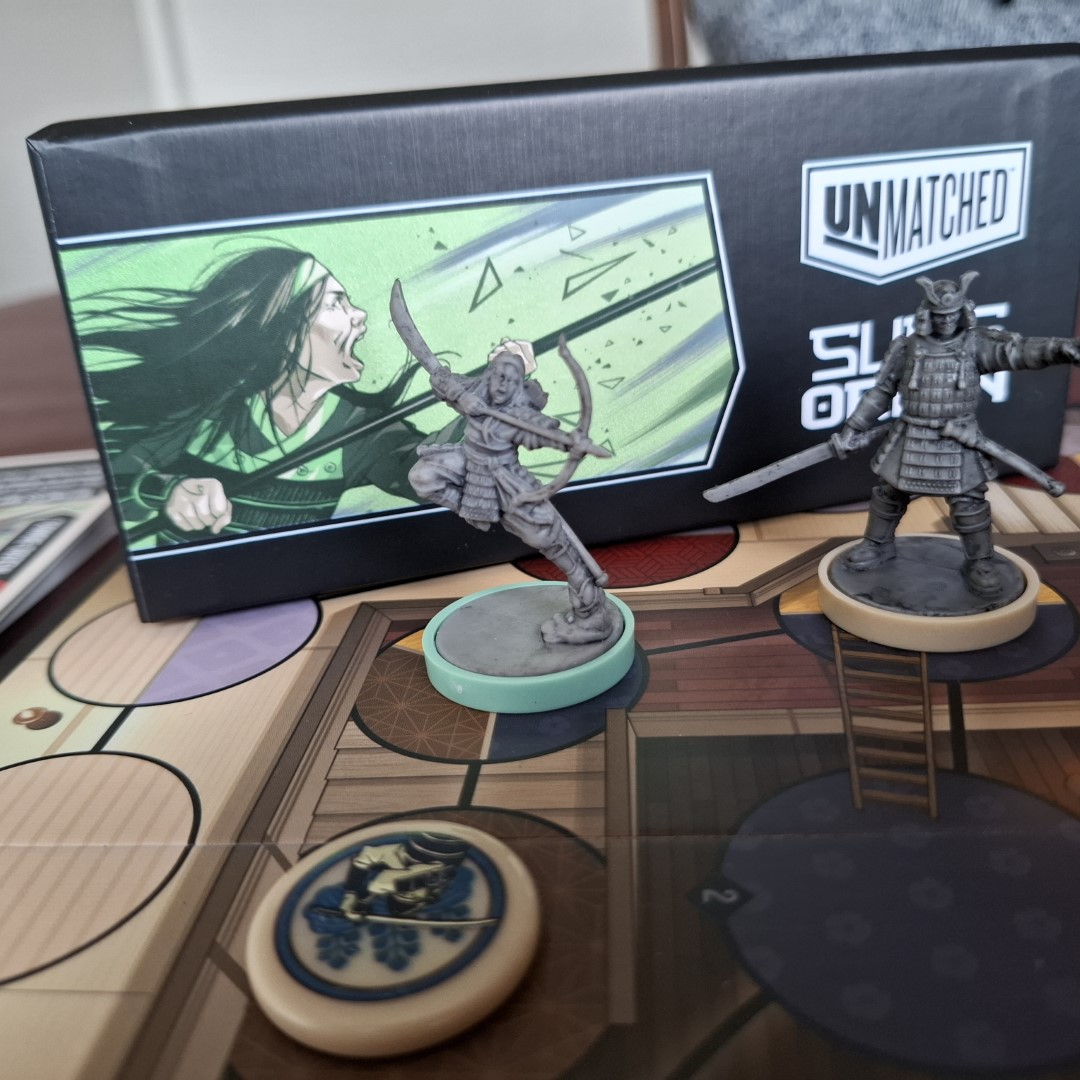
Initially, I thought Suns Origin might need two ratings. But then I realised my rating system already covers it (Past Aaron was a genius). Suns Origin hasn’t hooked me on Unmatched, but it has left me wanting more—and maybe that’s the point of any Unmatched set: to tempt you into exploring further.
Is Suns Origin a bad game? Not at all. It’s built on a brilliantly simple ruleset, and we’ve played it eight times already. But for us, it feels like an entry-level experience—just enough to entice you to explore further. And if you’re looking for more, Unmatched has plenty of expansions to offer.
Now, if you already own a lot of Unmatched, should you buy Suns Origin? Honestly, I might not be the best person to answer that. If you love Unmatched and want more characters, or if the theme appeals to you, then sure—go for it. If you’re wondering where these fighters rank in the grand scheme of Unmatched, I can’t say.
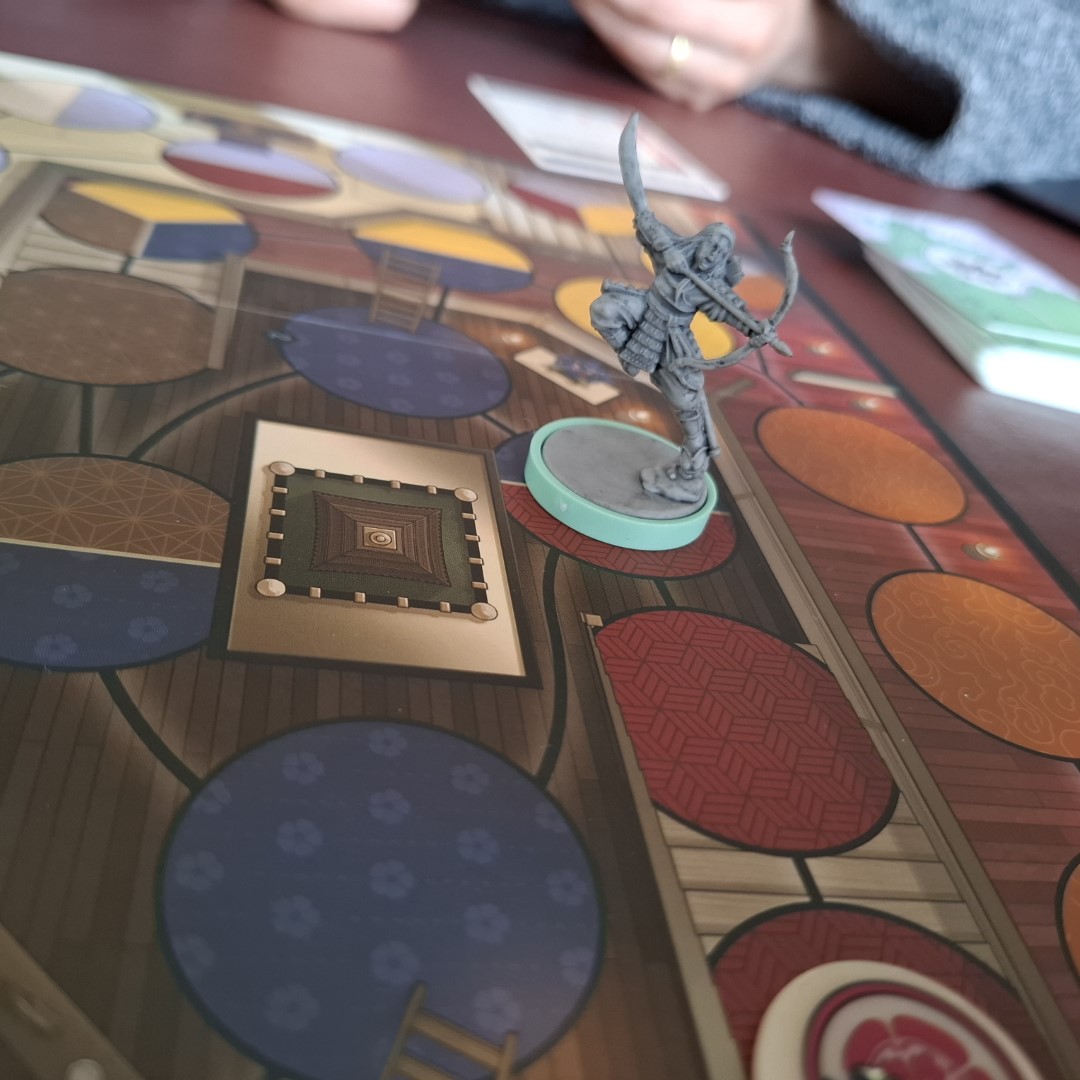
As someone brand new to Unmatched, I enjoyed Suns Origin, but I can’t shake the feeling that there’s a better starting point. For the reasons I outlined, our first few games felt rough—like an uphill battle of discovery. Maybe that’s natural for a head-to-head game, but when I think of Star Realms, 7 Wonders Duel, or Santorini, those games also had a learning curve, yet the experience felt different.
Final Rating: Play if you like Unmatched. More Unmatched isn’t a bad thing, right? But if you’re new to the series, there might be a better entry point. I guess I’ll have to do more research and play more sets to find out. Hell’s Kitchen looks particularly appealing!
Want to purchase Unmatched Suns Origin, you can here: https://kienda.co.uk/thematic/4733-unmatched-sun-s-origin-3701551702616.html
